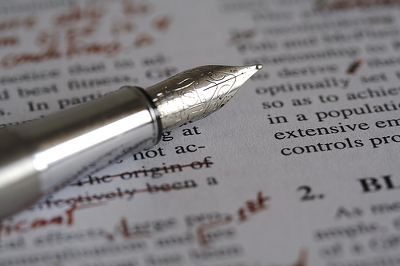Scientists and researchers thrive on publications for their research careers. Future research is often based on past published knowledge and findings. Hence, it is imperative that these publications are as authentic and accurate as possible, and of good quality. As much as it is exciting for researchers to share their findings with their scientific community, the process of preparing a manuscript and getting it published is quite a daunting task. At the same time, the responsibility of publishing only good quality papers is a constant challenge for the editor of any research journal. To help the editor facilitate this process, a research manuscript has to pass through a ‘quality check’ called as the ‘Peer Review Process’.
The peer review is used for scientific papers, grant applications, abstract/conference papers and text books for university press publishing. In this article, I outline the basic stages of the scientific journal peer review process. My intention is to help new researchers understand the various steps, so that they are better prepared, and know what to expect.
1. The process begins when the author submits the manuscript to a journal of his/her choice. Many journals have an online ‘manuscript submission system’ through which the manuscript, a cover letter and figures related to the manuscript can be uploaded. Other journals accept the submission via email or in the form of a hardcopy. Once the manuscript is submitted to the journal, the manuscript is assigned a manuscript reference number to be used for all future correspondences.
2. Depending on the journal’s policies, the review process could be either single-blinded, double-blinded or open peer review. We have described types of peer review in another article; hence, I will not get into those details here. The type of peer review that the journal uses can be found under the section ‘instructions to authors’ on the journal’s website or in the journal itself.
3. Once submitted, the manuscript is first reviewed by the journal’s editor who has some scientific background in the journal’s field of publishing. The editor decides if the manuscript is apt for publication, and assigns it to two or three external reviewers/referees who’s expertise best match the manuscript’s subject.
4. The reviewers comment on overall research quality, its significance to and impact on scientific progress in the field, its effectiveness in addressing the researcher’s question and if the data are compelling. The reviewer is responsible for highlighting any loopholes in the experimental strategy including appropriate controls, and also reserves the right to suggest further experiments to support the hypothesis.
5. The reviewers prepare a report based on their evaluation of the manuscript, which is sent to the editor. In the report, the reviewers recommend whether the manuscript should be accepted, accepted with minor revisions, accepted with major revisions or rejected. Most papers require some degree of revision.
6. The reviewers independently evaluate the manuscript, without consulting each other, in order to avoid any kind of bias or influence. In most cases, depending on the type of peer review, the reviewers may not know who the other reviewers are.
7. Based on the reviewers’ comments, the editor makes his/her own decision about publishing the manuscript. The editor prepares a report including the reviewers’ comments, and sends it to the author.
8. In cases where the two reviewers disagree in their decision, either the editor makes his/her own decision, or alternatively sends the manuscript to a third reviewer (as a tiebreaker) for review.
9. The editor sends a comprehensive report to the author. If the report suggests revisions be made to the manuscript, the author is expected to make the recommended amends, and resubmit the paper to the journal for publishing, within a specified time-frame.
10. After resubmission, the editor will make sure that the reviewers’ recommendations have been incorporated before accepting the paper for publishing. Rarely are the reviewers involved at this stage. In most cases, the editor’s decision is final.
11. If the paper is accepted, the author is intimated about its acceptance. The journal’s publishing department (press) may get in touch with the author for any information related to images or other data from the manuscript that may be needed. The publishing department provides a draft of the final paper for approval from the author before finally publishing the manuscript.
12. If the paper is rejected, the authors are allowed to send a ‘rebuttal letter’ to the editor explaining why they feel the criticisms made by the reviewers were unfair, and reasons why the paper should be reconsidered. Based on the rebuttal letter, the editor then decides if the paper should be reconsidered for publication. If the editor decides to reconsider the paper, the review process begins again.
13. Some journals have a transparent review system, where in, they let their subscribers see the details of the process including the reviewers’ comments.
Peer review helps to keep the authors in check so that they maintain the quality of their research. It compels them to meet the standards of their field, and avoid making very tall claims without sufficient evidence to support them. The process opens the field of science to new discoveries and inventions, which helps in the progression of knowledge and dialogue among the research community.
ASK Scientific helps authors prepare their manuscripts to very high standards, so that manuscripts are not rejected during peer review due to language, style and articulation. Visit our website for an overview of the services we offer.


